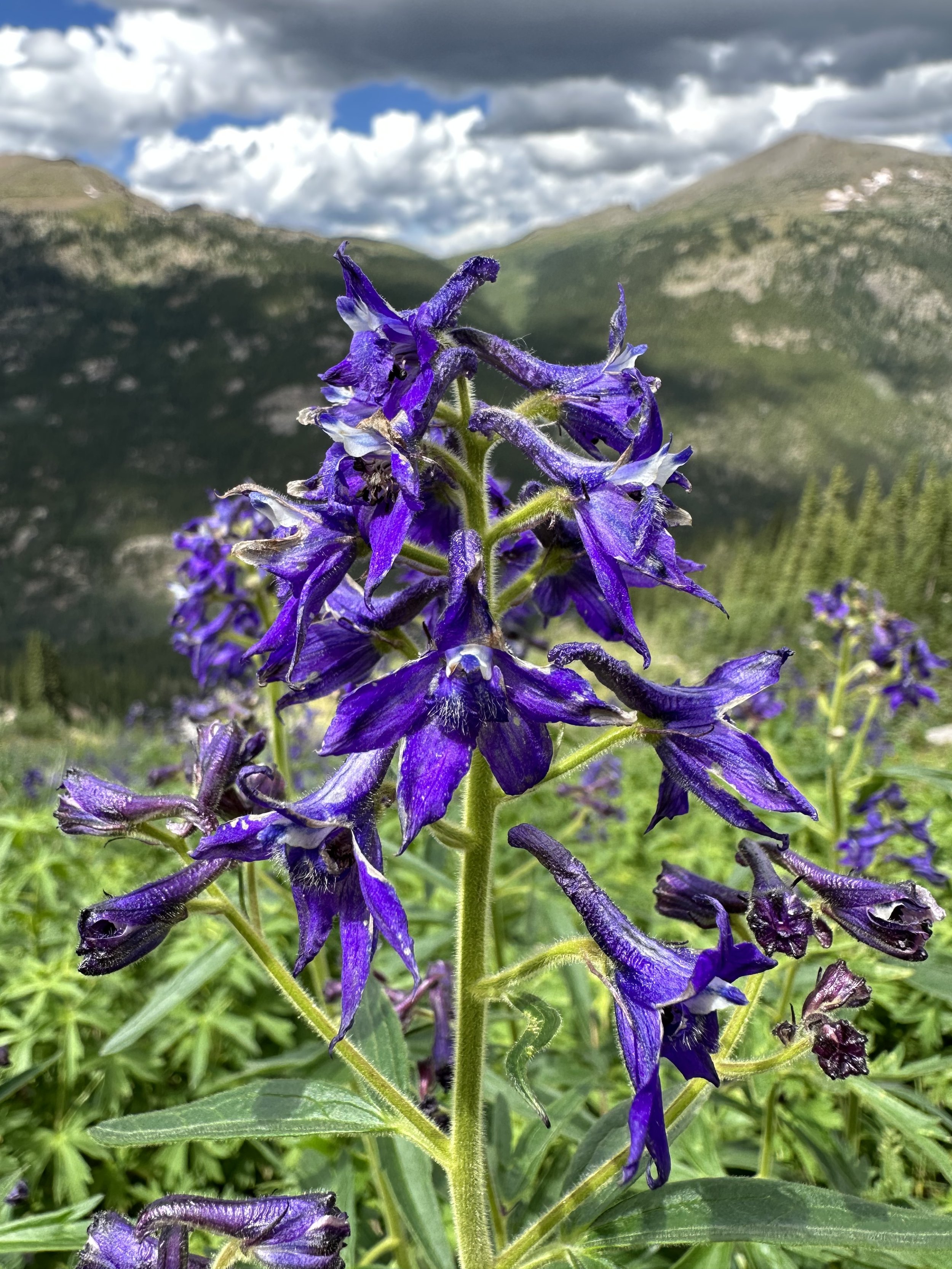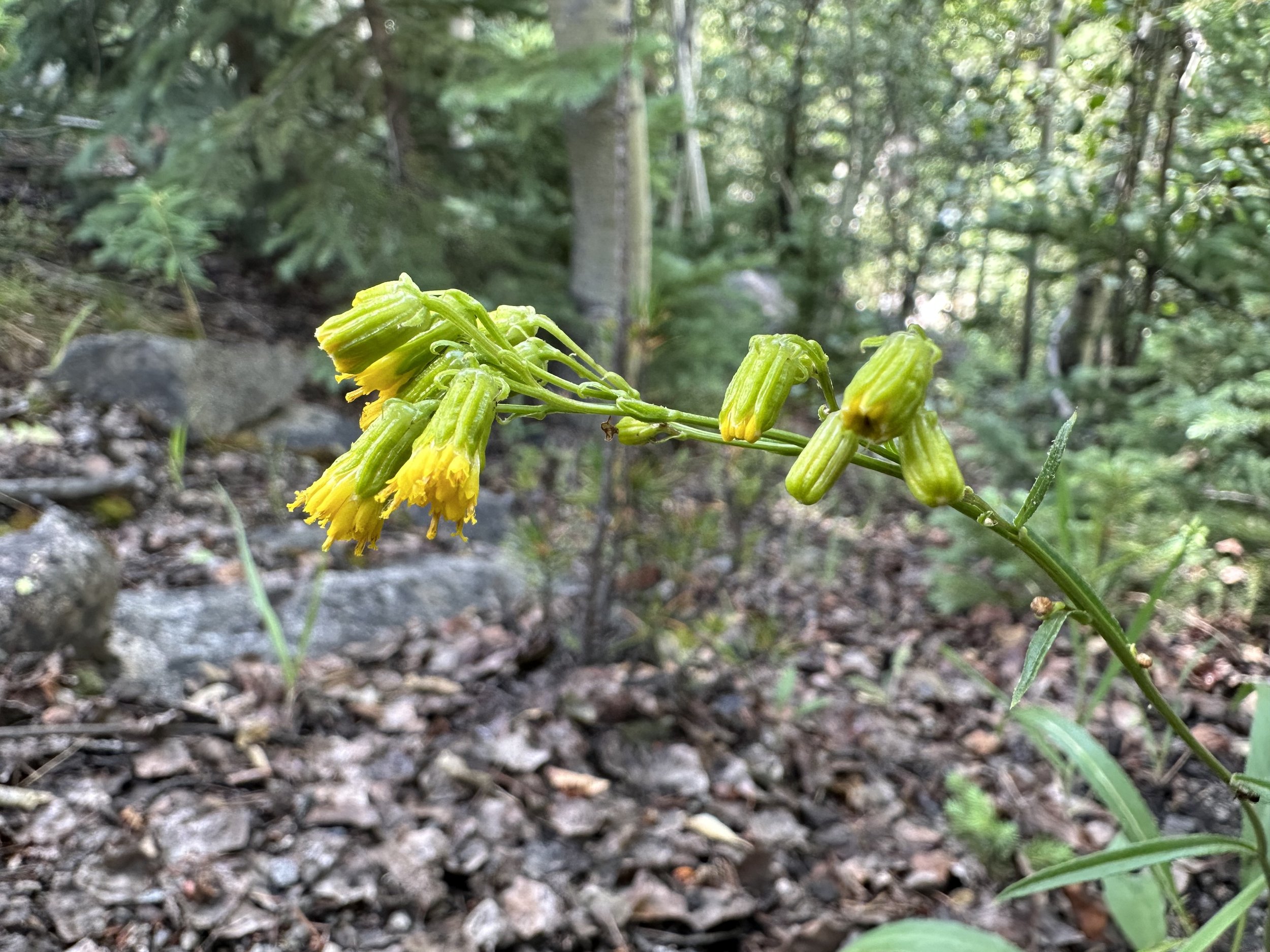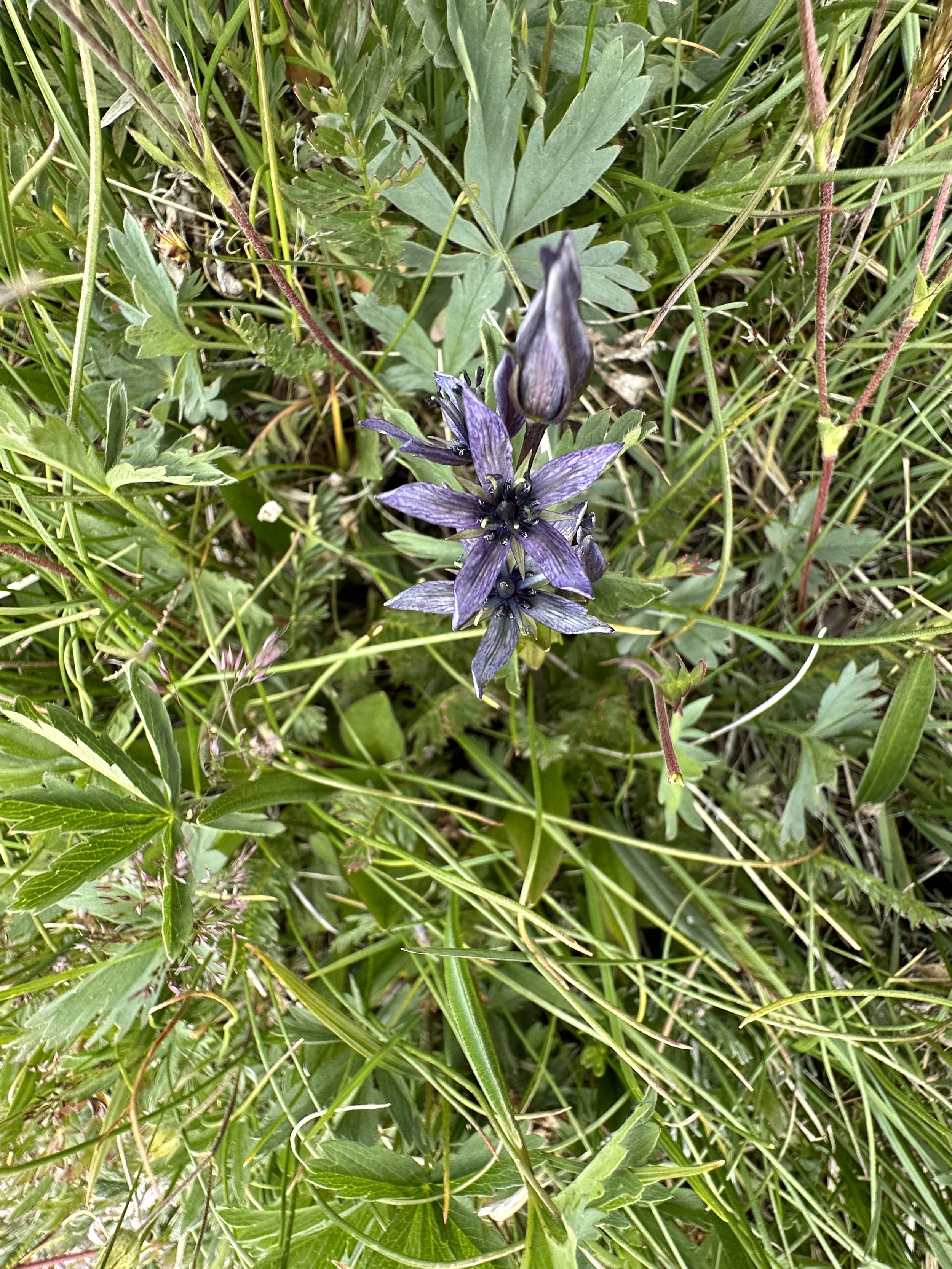Ligusticum tenuifolium, August 10, 2023
Common & scientific name
Slender-leaf lovage, Ligusticum tenuifolium
Family
Parsley, Apiaceae
Location
Roaring Fork River, 9,800’
Fun, weird, helpful, or little known fact
This plant is smaller, has fernier/more feathery leaves, and is found in wetter places than its cousin, Ligusticum porteri, Porter’s lovage, also known as Osha. Osha is famous for its medicinal properties, as taught to Native Americans by grizzlies.







































